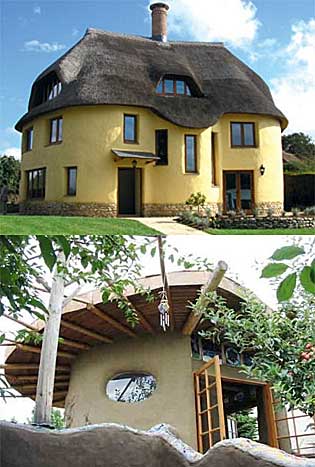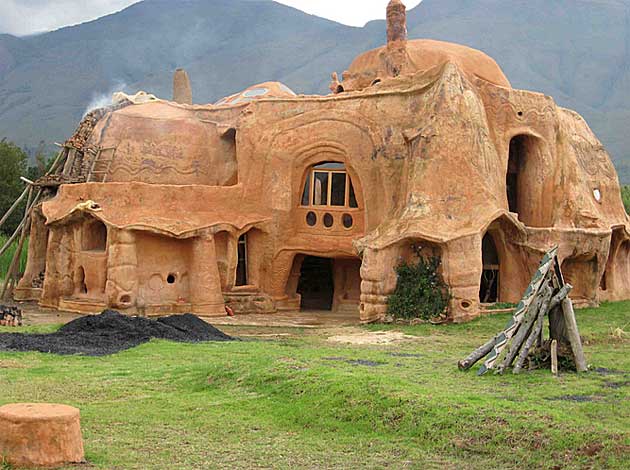Cobb Homes
Cobb homes are made using a mixture of soil, clay, mud, sand
and straw (not corn cobs). This is formed into globs, loaves or
bricks that work as the building blocks for your house. The initial
foundation is completed first, and the house is framed as usual.
Then the cobb mixture is used to form the walls of the house.
After the walls are done and completely dry, you will apply a
mixture similar to plaster, to seal the walls against the outdoor
elements.
 Cobb Homes
Cobb Homes |
|
The method of building cobb homes is an ancient method, having
been used in areas the world over at some time. You may see cobb
houses now that are in use after having been built hundreds of
years ago. In some areas, they are built without the wood frame
structure, and the loaves or bricks are simply stacked on top
of one another. But today's building codes require that the structure
be framed, generally using 2'x6' lumber. After the frame is ready,
it's not difficult to build the walls from the cobb mixture.
In building a cobb house, you'll need sand, straw, mud, a trowel
and cow manure or cattail fiber. For burnishing, a piece of burlap
or rubber will suffice.
You'll begin by mixing the sand/mud/straw compound. There isn't
really an exact recipe, but you are usually better off to start
with clay type soil, and then add water until the consistency
is mud, then mix in the sand and add your straw until the complete
mixture can be molded, and until it holds itself together. Long
straw will strengthen the compound.
Cobb Globs ...
After you have your cobb material made, you'll form it into globs,
loaves or blocks. You can buy a mold for bricks if you prefer,
but many builders who use the material just knead the mud and
form it into bricks shaped like loaves of bread. Then these are
placed atop one another and they become the walls. You may also
take handfuls and just slap them onto the framing. After six inches
are applied, you must let it dry before you continue.

Cobb walls are built with time. You have to allow the drying
phase after each six inches of height. If they don't dry properly,
they may crack. As you go, fill in spaces so that you can't see
the bricks or loaves.
Getting Plastered ...
Next, you'll need your mud plaster coating. Apply this to the
inside and outside of the walls. The materials in your plaster
will be similar to those used in the cobb mud, but the mixture
should be thinner and smoother. Making natural plaster calls for
clay, sand and short fibers like cattail fluff, cow manure or
chopped straw. Add a binding agent made with water added to flour.
Apply your plaster after you wet down the cobb wall to better
the adhesion. Don't over-water the wall, though. You can apply
your plaster with a trowel or by hand. It should be a thin coat,
no thicker than a half inch. Smooth it out well. Burnish the plaster
surface with wet burlap or a rubber piece, when it has partially
dried. This adds a finished look to your home.
Layer It On ...
After all the walls have been built and then plastered, you can
install windows and doors and erect a roof for your cobb house.
It will take you a few weeks to build this type of house if you
do it properly. The layers must be allowed to dry or they may
crack later on.
|

